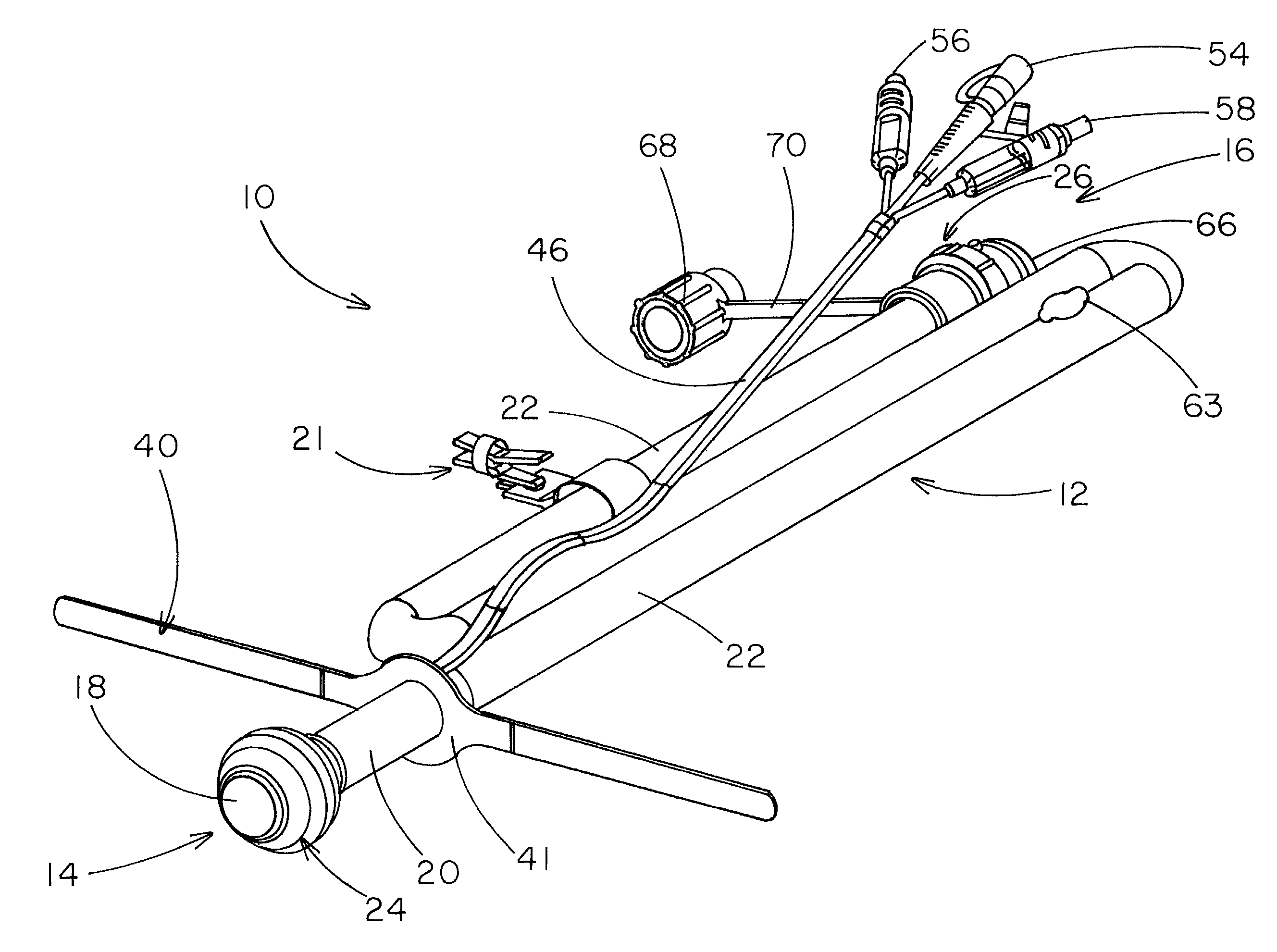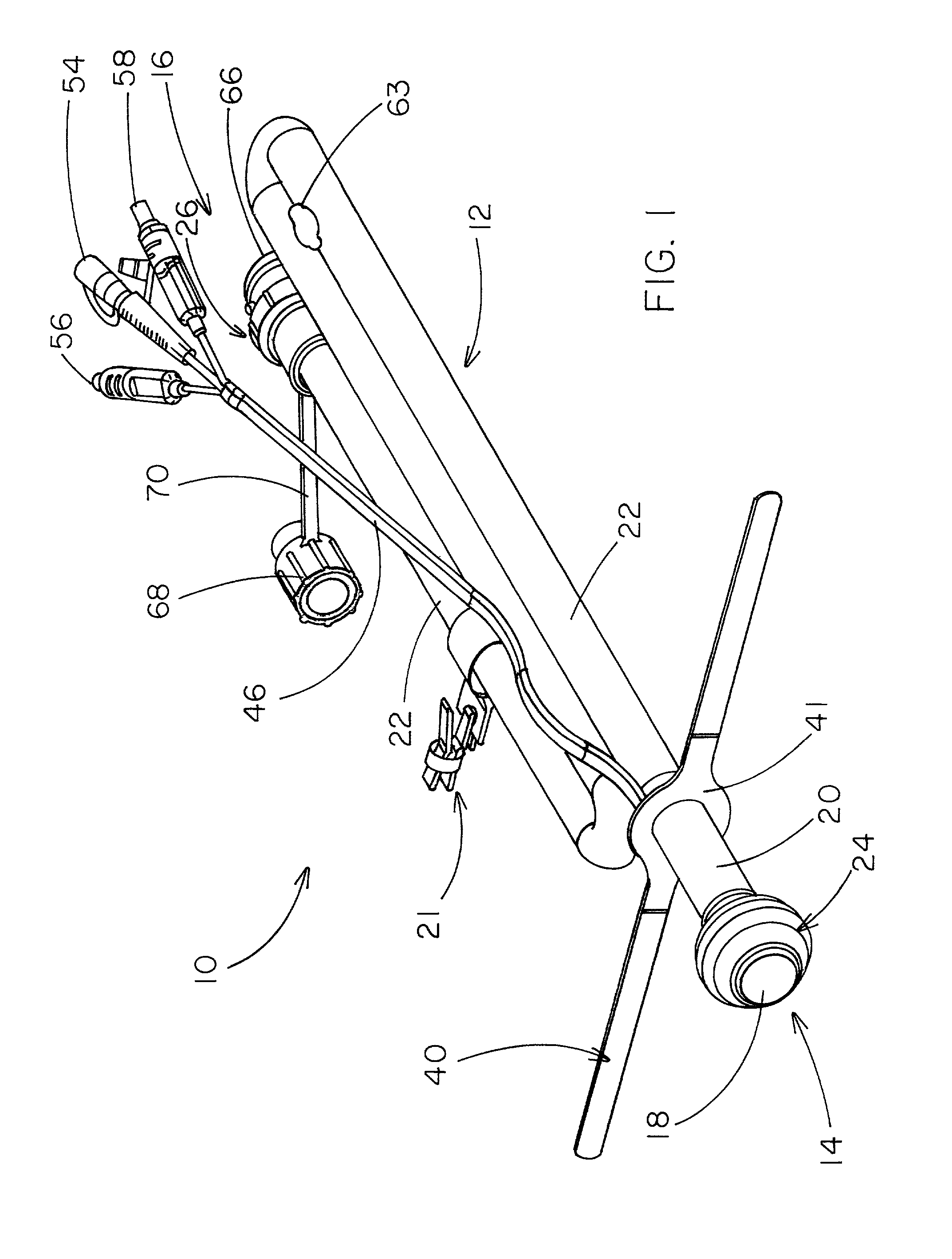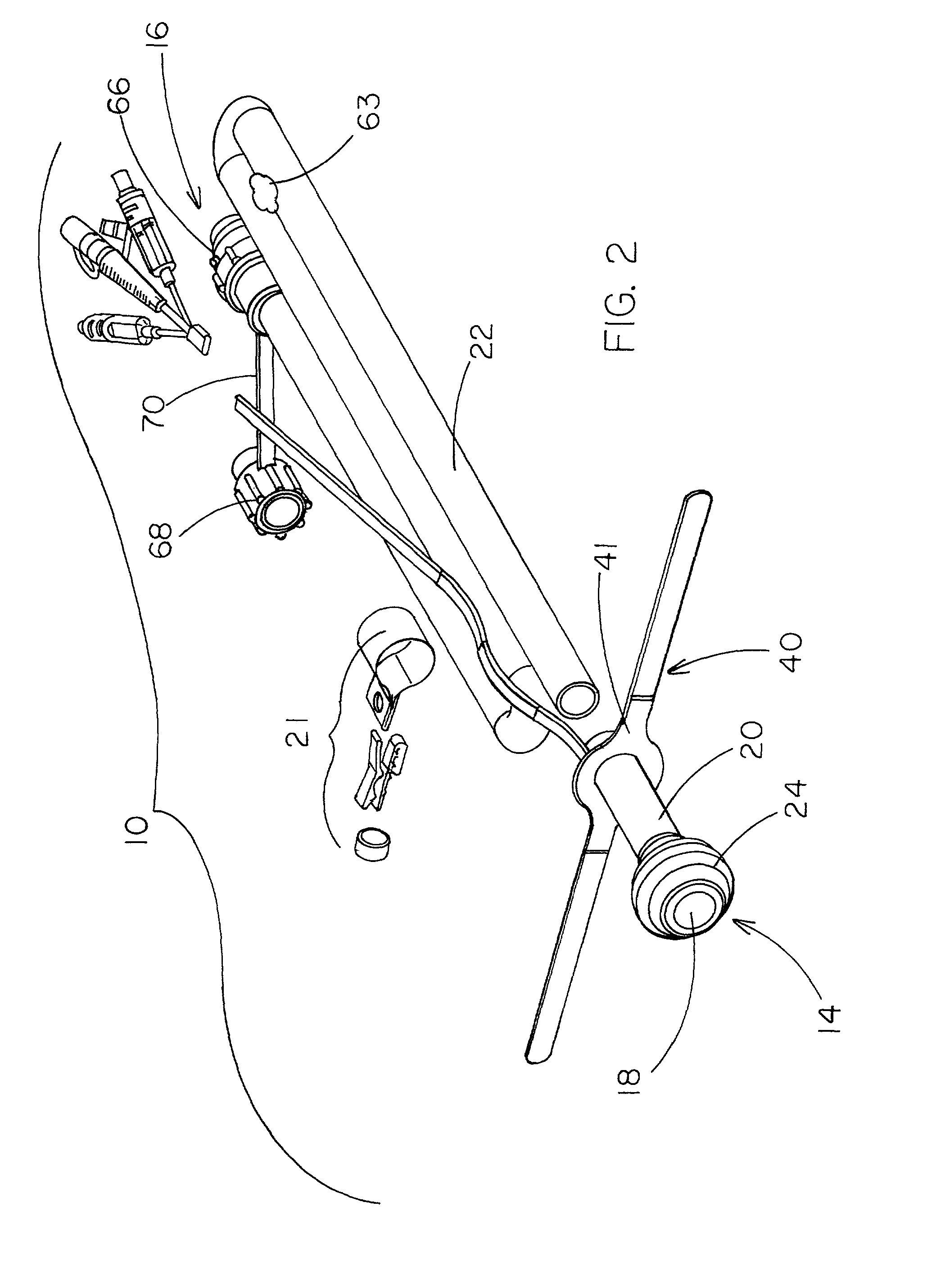Bowel management system
a bowel and management system technology, applied in the field ofrectal catheters, can solve the problems of incontinent patients and their caretakers, imposing even greater nursing problems, and extending the incontinent period of individuals,
- Summary
- Abstract
- Description
- Claims
- Application Information
AI Technical Summary
Benefits of technology
Problems solved by technology
Method used
Image
Examples
Embodiment Construction
[0046]With reference to the figures, and particularly FIGS. 1 and 2, a bowel management system, generally designated 10, includes a catheter 12 having a patient proximal end 14 and a patient distal end 16 and three distinct sections 18, 20, 22 therebetween. Rectal catheter section 18 is located at the proximal end 14 of the catheter, section 20 is a midsection and section 22 is toward the patient distal end 16. A first balloon 24, which is inflatable, is mounted at the patient proximal end 14 of catheter 12 and a bag connector assembly 26 is mounted at the patient distal end 16. These elements will be described in further detail hereafter.
[0047]Rectal catheter section 18 has a patient proximal opening that, when positioned for normal use, opens into the rectum of a patient and a second end or distal opening which connects to the second catheter section 20. First catheter section 18 (shown enlarged in FIGS. 8, 9, 10 and 12) is formed of a material having a durometer hard enough to ma...
PUM
 Login to View More
Login to View More Abstract
Description
Claims
Application Information
 Login to View More
Login to View More - R&D
- Intellectual Property
- Life Sciences
- Materials
- Tech Scout
- Unparalleled Data Quality
- Higher Quality Content
- 60% Fewer Hallucinations
Browse by: Latest US Patents, China's latest patents, Technical Efficacy Thesaurus, Application Domain, Technology Topic, Popular Technical Reports.
© 2025 PatSnap. All rights reserved.Legal|Privacy policy|Modern Slavery Act Transparency Statement|Sitemap|About US| Contact US: help@patsnap.com



